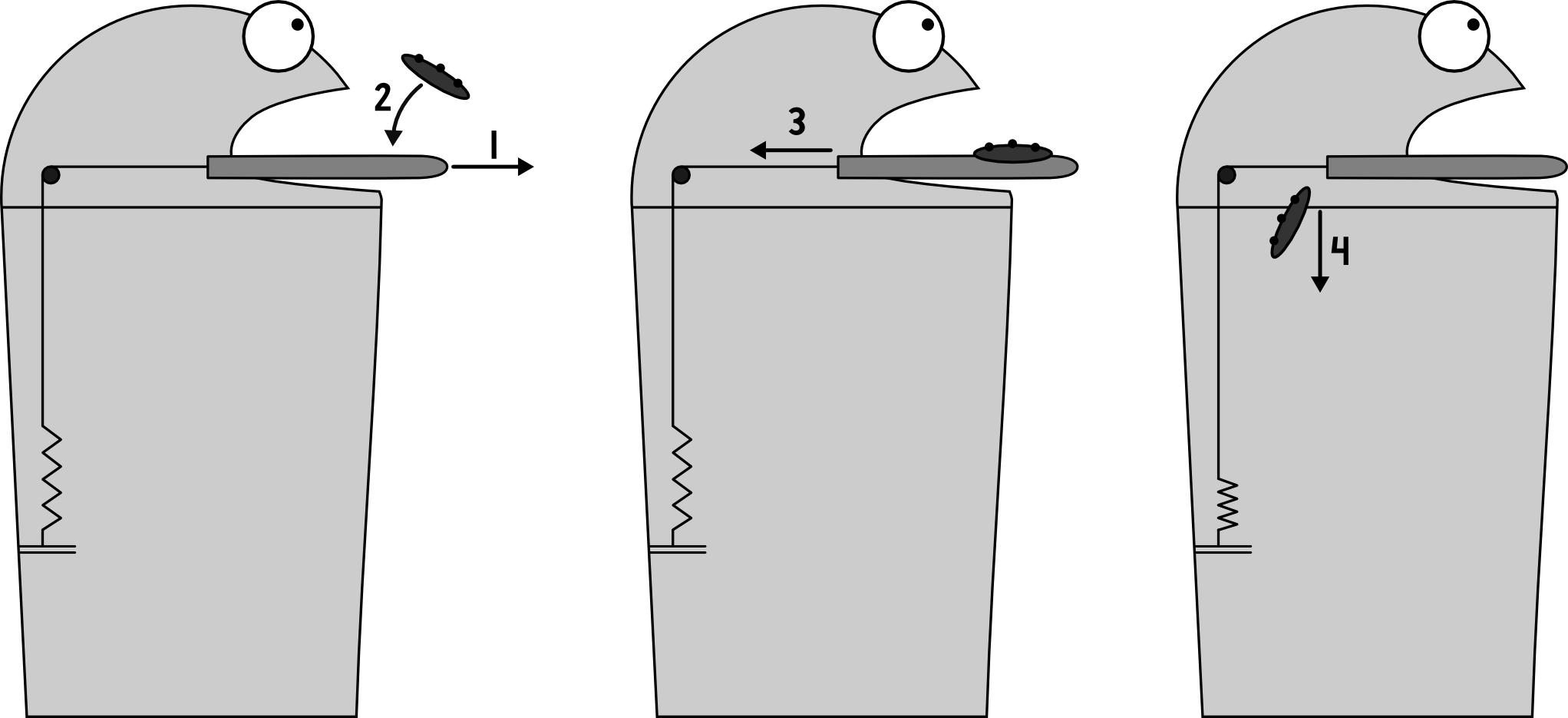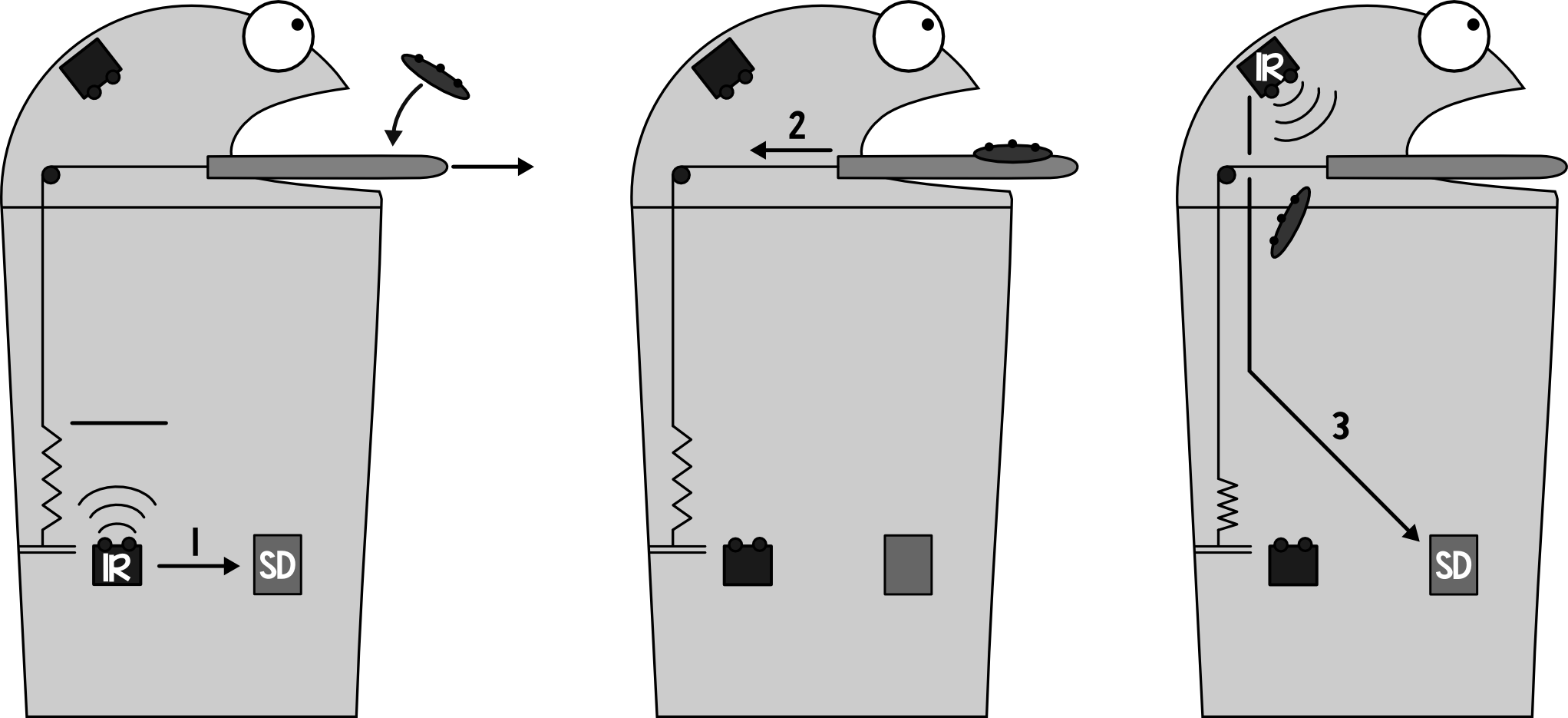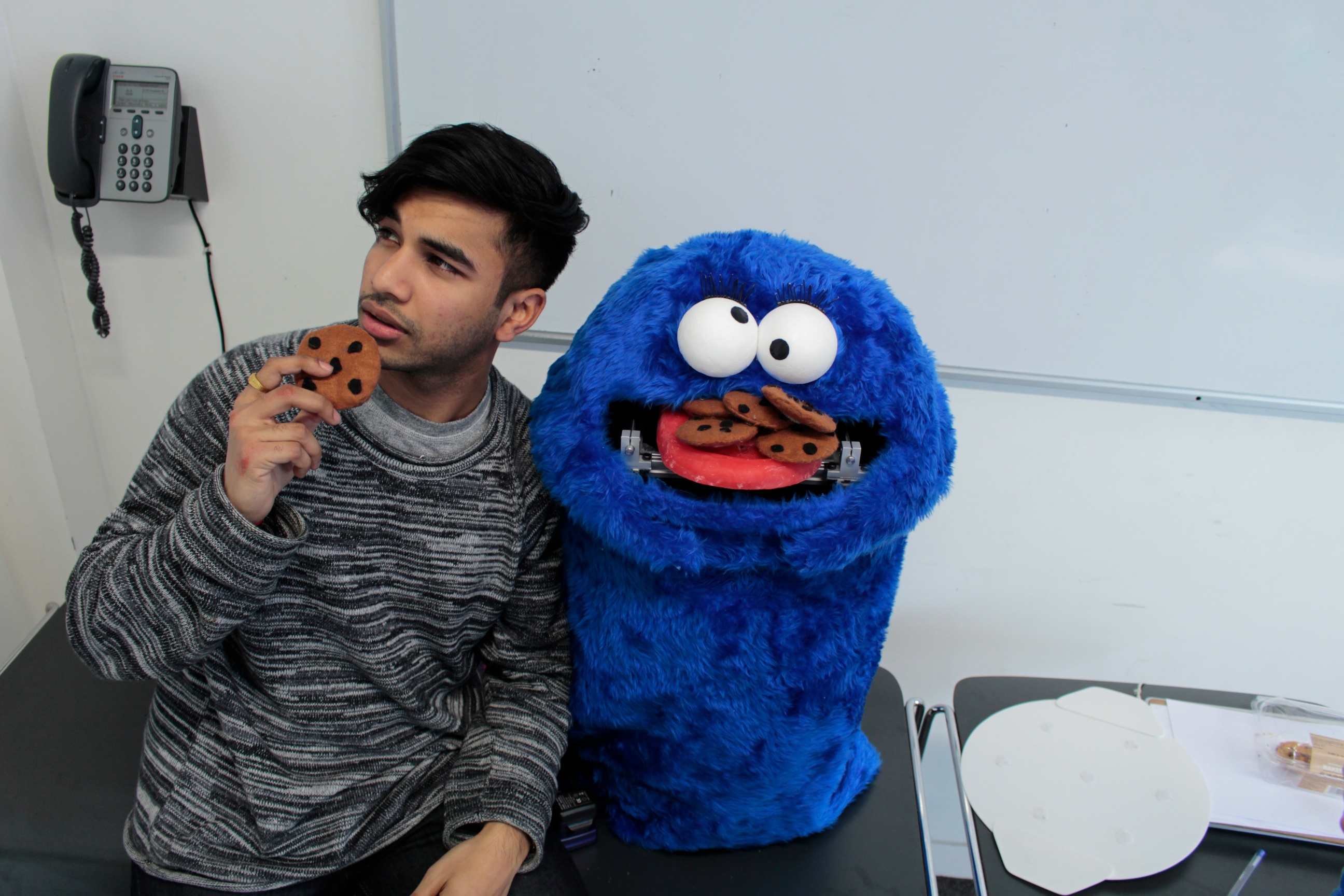rehabilitative cookie monster
Final prototype of the Cookie Monster - a rehabilitative toy for cerebral palsy patients
Group project in fourth year Bioengineering elective in Human Centred Design of Assistive and Rehabilitation Devices.
The aim of the device is to reduce upper limb spasticity in 2 year olds with cerebral palsy, specifically patients with spastic hemiplegia (where muscles on one side are in a constant state of contraction) or hemiparesis (where there is weakness on one side of the body).
This is achieved via the repeated use of the Cookie Monster (CM) bimanual toy. The patient is encouraged to pull the spring-resisted tongue of the Cookie Monster with his/her affected arm, thereby promoting its use and acting as a rehabilitative tool for the arm. The non-affected arm is used to pick up and place a toy cookie on the tongue.The pulling of the tongue and its release back into the Cookie Monster’s mouth with the cookie triggers auditory rewards in the form of Cookie Monster noises in order to keep the patients engaged.
Meetings with occupational therapists such as Anne Gordon of Evelina London Children’s Hospital highlighted the difficulty of quantitatively measuring spasticity. The device will measure and record the pulling force and extension of the tongue to gauge the relative strength of the patient over time, as well as the rate of extension to provide an indication of spasticity by essentially measuring smoothness of motion. Repetition of the activity is important as Dr Gordon suggested that average values of repeatable actions provide a better indicator of performance. This data is then displayed in a useful manner for physiotherapists to examine and track changes or improvements in the patient’s condition, and a library created for further medical research on spasticity.
Patient-side example of how it works


Simplified layout of the mechanics (top) and electronics (bottom) of the device (drawn by John Bertolaso).
IR proximity sensors are used to determine the extension of the tongue; this is then related to the force of the tongue extension by using Hooke's law on the tensile springs in their linear response range.
Combining springs with IR sensors allows for the stiffness of the tongue to be easily modified to suit the patient.
Early tongue- mechanism prototype

Final tongue-mechanism prototype with silicone tongue, linear bearings and Rexroth parts (top), and the integration of the electronics on the mechanical frame (bottom).

Tongues can be cast and shaped differently, depending on the needs and abilities of the patient.
The tongue is the primary source of interaction between the rehabilitative device and the patient. It is made of a soft silicone elastomer: a tough, non-toxic and pleasant to touch material. The haptic attributes were determined to be a key part of the user experience; the aim is to keep the task stimulating enough for a child to keep them engaged on the task for an extended period of time.
The toy cookies have been created very flat and are velcro'd on to a flat plate; this encourages the patient to use his/her more dexterous, non-affected arm to pick up the cookie, leaving the affected arm to extend the tongue for rehabilitation purposes.

CM and I tryna get it